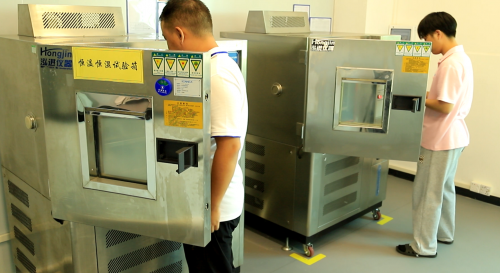Mating and unmating cycles: a direct indicator of connector durability
Electronic connectors, as key components for signal transmission and power connection between electronic devices, the number of plugging and unplugging is a direct indicator of their durability. The number of plugging and unplugging not only reflects the ability of the connector to maintain the stability of the electrical connection during repeated use, but is also directly related to the service life of the connector. High-quality electronic connectors, such as wire-to-board connectors, are designed with precise contact structure and high-strength shell, which can maintain the integrity of the contacts and the reliability of the electrical connection during frequent plugging and unplugging operations, ensuring the continuity and stability of signal transmission.
Vibration resistance: ensures connector stability in dynamic environments
Vibration is a common environmental factor in the application scenarios of electronic devices. Vibration resistance is particularly important for wire-to-board connectors, especially in the fields of industrial automation and automotive electronics. Vibration resistance not only requires the connector to maintain stable electrical connections in a vibration environment, but also to prevent loosening of contacts or damage to insulators caused by vibration. Therefore, the design of wire-to-board connectors needs to consider the impact of vibration on the pressure distribution of contacts, and use materials and structures with elastic recovery force to ensure reliable electrical connections in a vibration environment.

Impact resistance: a line of defense to protect connectors from accidental damage
Impact resistance is a key indicator to measure whether the connector can maintain structural integrity and electrical connection function when subjected to sudden external forces. During the use of electronic equipment, it may encounter unexpected situations such as falling and collision. At this time, the impact resistance of the connector is particularly important. The wire-to-board connector can effectively absorb and disperse the impact force through the design of a sturdy shell and an optimized internal structure, protecting the contacts and insulators from damage, and ensuring that it can still work normally after an unexpected impact.
Optimizing Durability Design: Synergy of Materials, Structures and Processes
To improve the durability of connectors, we need to start from three aspects: material selection, structural design and manufacturing process. Choosing high-strength and high-elastic materials, such as stainless steel, special plastics, etc., can significantly improve the connector’s resistance to plugging and unplugging wear, vibration and impact resistance. In terms of structural design, the stability and durability of the connector can be further improved by optimizing the layout of the contacts, adding locking mechanisms, and adopting elastic contact designs. In addition, strict control of the manufacturing process to ensure the accuracy and fit of each component is also the key to improving the durability of the connector.
The number of mating and unplugging, vibration resistance and impact resistance are key indicators to measure the durability of electronic connectors, especially wire-to-board connectors. Through scientific material selection, structural design and manufacturing process optimization, KONNRA can significantly improve the durability of connectors and provide a solid guarantee for the stable operation of electronic equipment.










